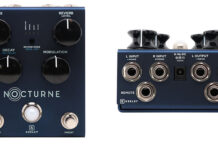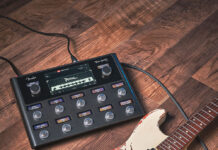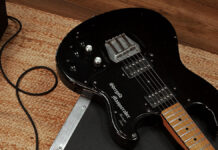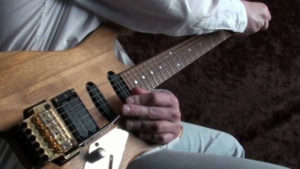
The Oddly Fascinating Pairing of Two Completely Unrelated Triads
Last month, I presented a neat formula for generating two unusual and exotic hexatonic (six-note) scales. I’d now like to show you how altering only one note in one of these triads produces a different and profoundly mysterious and otherworldly sounding hexatonic scale.
Last month, I presented a neat formula for generating two unusual and exotic hexatonic (six-note) scales, which I called D “gypsy-minor hexatonic” (D E F G# A B) and E “Phrygian-dominant hexatonic” (E F G# A B D), both of which we formed by combining two triads, D minor (D F A) and E major (E G# B).
I’d now like to show you how altering only one note in one of these triads produces a different and profoundly mysterious and otherworldly sounding hexatonic scale that, to me, brings to mind numerous, memorable film scores I’ve heard over the years, in such epic cinematic works as Jurassic Park, the Batman franchise and the Lord of the Rings trilogy.
Here’s how it works: take our D minor triad and raise its A note a half step to Bb, which transforms the triad to Bb major (Bb D F). Now, combine that with the E major triad, the root note of which is a tritone (three whole steps) away from Bb. The two triads are diametrically opposed, meaning they are musically as far apart as can be and have absolutely nothing in common.
Together, they give us an odd- and enigmatic-sounding six-note entity that I like to call the E “odyssey” scale—E F G# Bb B D. FIGURE 1 shows a good way to lay out the notes on the guitar, by alternating inversions of E and Bb major triads up the fretboard. Structurally, the scale is spelled 1 b2 3 #4 5 b7, which gives us, against an E root note, three tense-sounding notes—the b2, F, the #4, or b5, Bb, and the b7, D.
Interestingly, if we were to start on Bb and think of that note as our root, we would get the very same interval structure, relative to that root. So the two scales, E odyssey and Bb odyssey, are not only built from the same six notes, they are also identical in form and character. This is comparable to the symmetrical interchangeability of diminished seven chords that are minor thirds apart, or augmented triads major thirds apart.
FIGURES 2–4 are examples of runs that can be crafted using the E odyssey scale. They each have that “outside” quality that jazz and metal musicians love and sound “spooky” and sinister when played over an E7 or E5 chord, or just an E bass note.
FIGURE 2 flies right up and down the scale in a linear fashion, using hammer-ons and pull-offs liberally. Notice the quick, silent position shift to the higher octave that occurs in bar 4, as indicated by the fret-hand fingerings below the tab. FIGURE 3 is a blistering alternate-picking run that cascades diagonally across all six strings with a recurring, symmetrical three-note shape.
Again, note the use of quick, silent position shifts (no finger slides used).
FIGURE 4 takes a similar approach, this time with alternating E and Bb major arpeggios that “climb,” then “tumble,” with palm-muted alternate picking used on the ascent, followed by descending upstroke sweeps in the final three bars, which creates a lopsided, “slinky”-like effect.
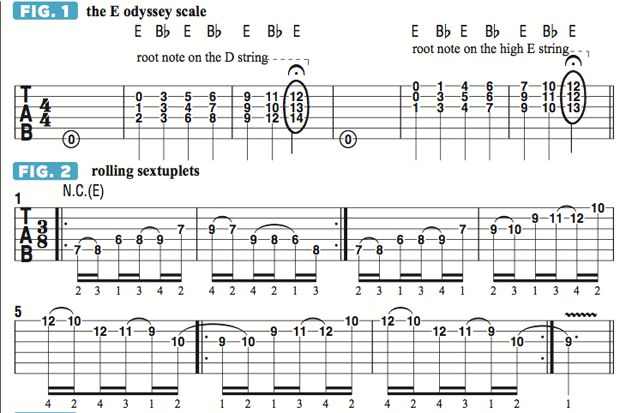
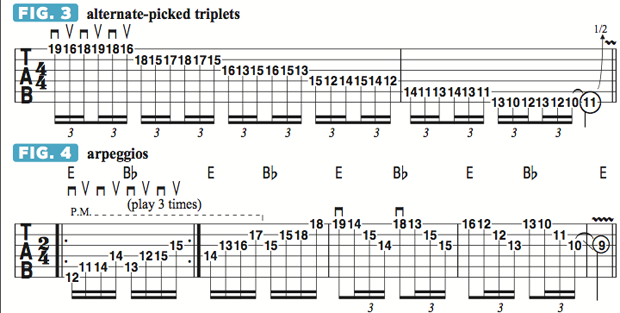
Source: www.guitarworld.com

